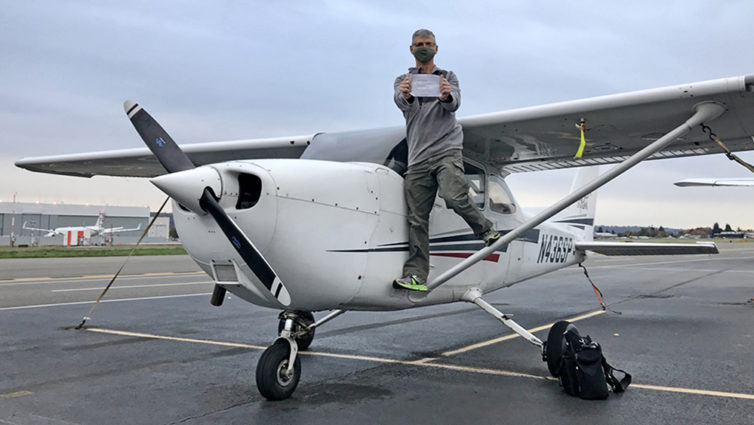
Success! I finally earned my private pilot certificate!
This is a continuation of my multi-part series on learning to fly. You can read the whole Fly With Francis series here.
After a year and a half of concerted effort, I’ve finally completed my initial training and earned my private pilot certificate in early November. It’s a great feeling!
For those who’ve been following along on my adventures at Galvin Flying, it’s been a long process of successes and setbacks, many of which were weather related because I live in the Pacific Northwest, where the local joke says that it only rains once a year it starts raining in late October and stops raining on July 5 (it always seems to rain on July 4).
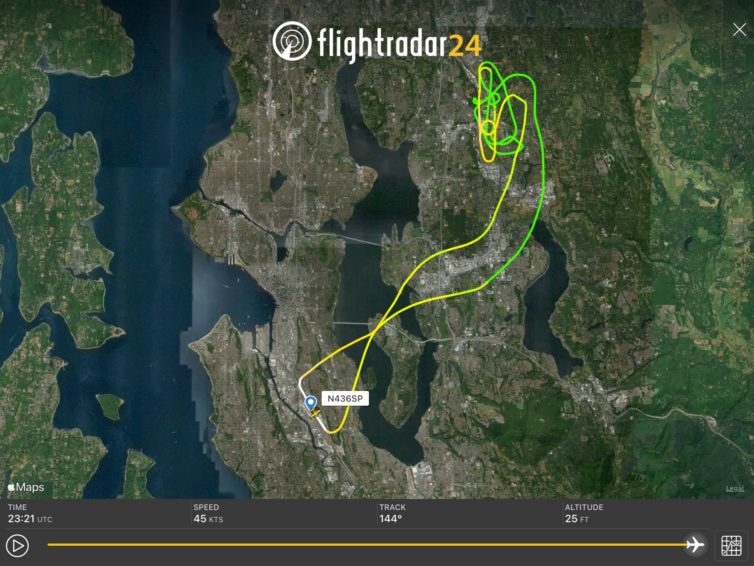
In case you ever wondered what the track of a checkride looks like, here you go. Screen capture courtesy FlightRadar24
Anyway, I did several mock checkrides in the weeks leading up to the actual FAA one, and had to complete Galvin’s end-of-course checkride before that. The end-of-course checks are designed to be more difficult than the actual checkride to ensure that pilot candidates are as prepared as possible.
The FAA examiner, also known as a designated pilot examiner or DPE, selects from a long list of information and flight maneuvers for the actual checkride known as the Airman Certification Standards. The check airman who oversees the end-of-course checks runs through the entire list to be sure you’re ready.
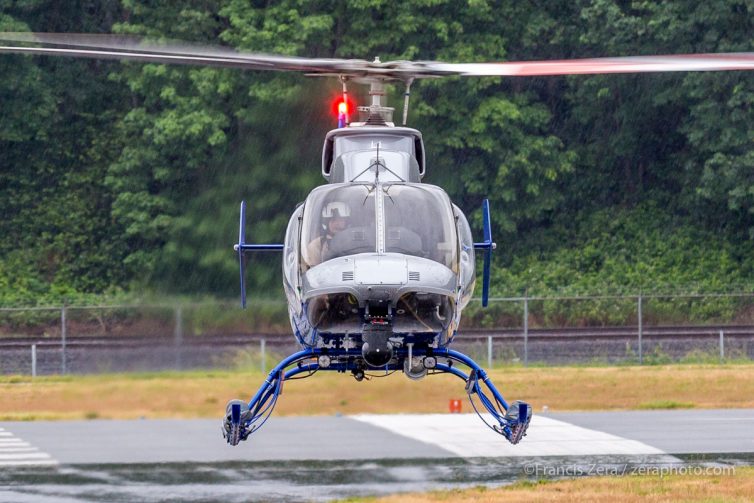
The DEA’s Bell 407 lands in the Seattle rain
The traveling American Heroes Air Show visited Seattle’s Museum of Flight on May 21 for the first time since 2012. The helicopters-only show, which was held in Austin earlier in May and is scheduled for Los Angeles in June, does not feature traveling aircraft. Rather, it gathers local rotorcraft from military bases, police, fire, EMS services, federal agencies, and private firms for what amounts to a public one-day fly-in. Agencies are encouraged to set up informational/recruiting tables at the events, which are free and open to the public.
The 2012 Seattle event featured several military craft, including a Chinook transport and an Apache attack helicopter. The military aircraft were withdrawn from this year’s event not long before the show, leaving just a handful of helicopters on display: the DEA’s Bell 407, a Schweitzer two-seater, a Robinson R44 on inflatable floats, an R22, and Airlift Northwest’s Agustawestland A-109-E.
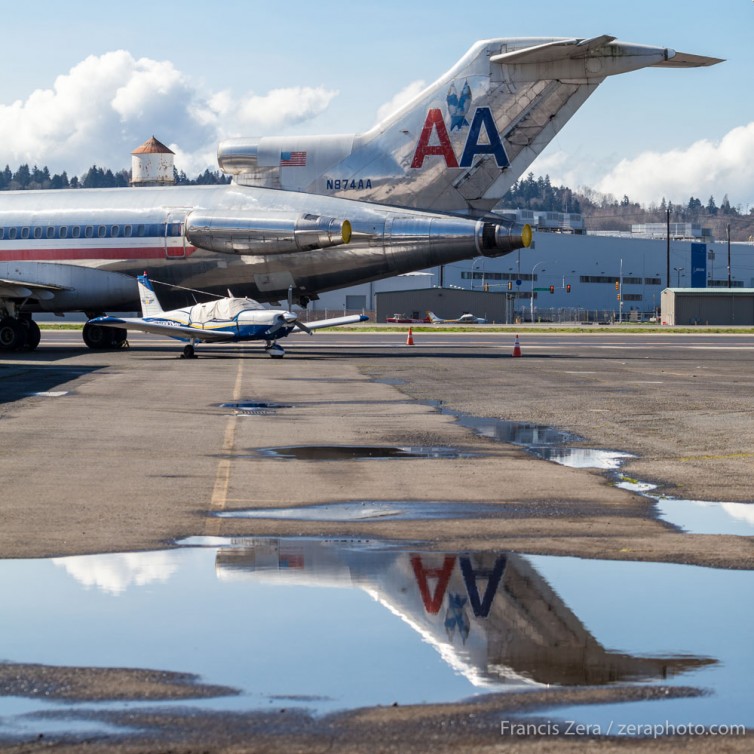
The former American Airlines B727-223, N874AA, at Boeing Field in Seattle, now owned by the National Airline History Museum, Kansas City, Mo.
In early 2015, in preparation for the construction of its giant new Aviation Pavilion, Seattle’s Museum of Flight moved its Boeing 727 (formerly American Airlines N874AA) from the parking lot on the west side of East Marginal Way where it had been displayed along with other large aircraft. Instead of being towed to the museum’s air park with the other planes, it was towed all the way across King County International Airport (also known as Boeing Field) to a parking stall. Rumors swirled that it was headed for a new home, an unnamed museum in the Midwest.
And there it sat, and sat. And sat.
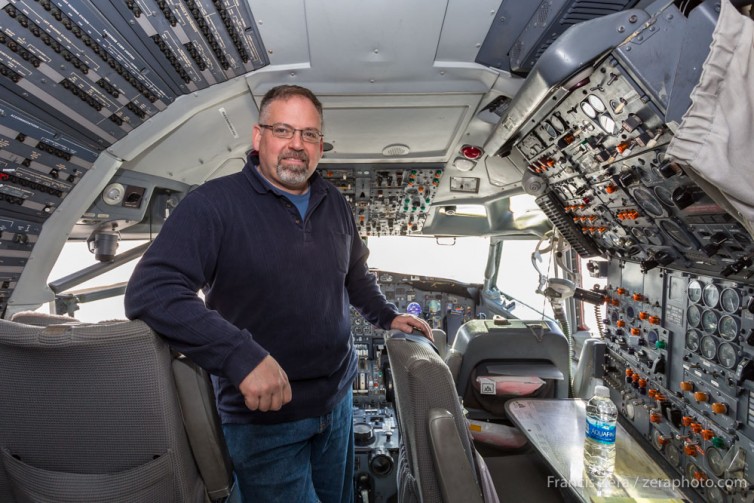
NAHM Executive Director John Roper in the cockpit of the B727 his museum recently acquired from Seattle’s Museum of Flight
On March 3, the mystery was solved when John Roper, the executive director/board member of the National Airline History Museum (NAHM) in Kansas City, Mo., signed the transfer paperwork alongside Museum of Flight CEO Doug King and COO Laurie Haag, officially transferring ownership of the aircraft to the Midwestern museum.
The elderly 727 now has a dedicated Facebook page, and, as of this week, the electrical systems were in the process of being activated and checked in preparation for the aircraft being flown to its new home. Roper said that, as long as the engines are sound, his goal is to get the plane to its new home in Kansas City by May 1.
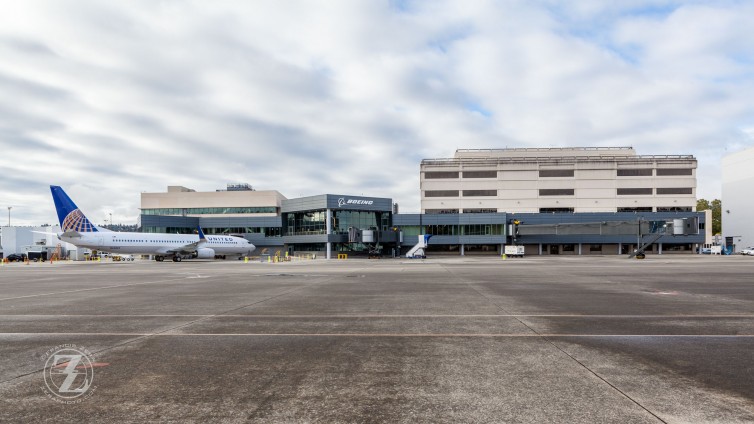
The new delivery center building has three gates and enough interior space to accommodate three simultaneous aircraft deliveries. The 737-900ER shown parked at the gate was delivered to United Airlines on Oct. 19.
Boeing opened its new Seattle delivery center for its booming 737 program on October 19 at King County International Airport, a.k.a. Boeing Field.
The 90,000 sq. ft. building is more than twice the size of the previous facility, which was located on the same site. It took 15 months to demolish the old structure, build the new one, and renovate some of the adjoining office spaces. According to Boeing officials, the new facility was needed to better accommodate the ever-increasing production rates for their 737 line. The current production rate for 737s is 42 per month, and planned rate increases will take that number to 52 per month in 2018.
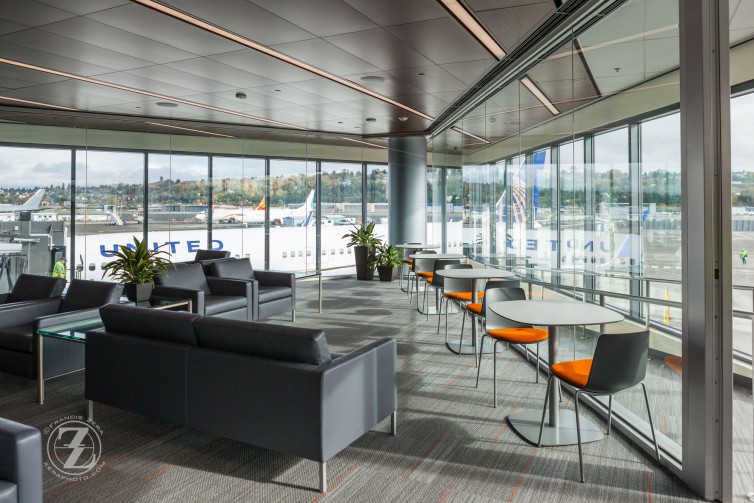
The main departure lounge at the new delivery center offers good views of the flight line.
I recently had the opportunity, on behalf of AirlineReporter, to check out the new facility and I was excited to see what an airline’s representatives experience when picking up their $85 million jet.
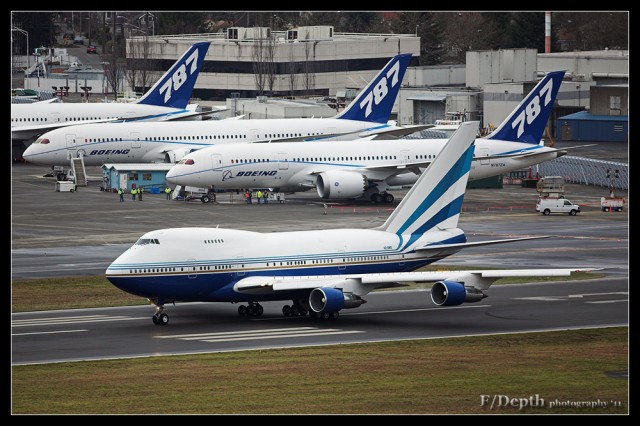
Kevin Scott caught this once in a lifetime shot of a Boeing 747SP (VQ-BMS) at Boeing Field with three Boeing 787 Dreamliners in the background.Click for larger.
Soak it in. This is not a photoshop — you are seeing one classic Boeing 747SP in front of three 787 Dreamliners caught while at Boeing Field in February 2011.
This 747SP first flew on May 1, 1979 and was delivered to Pan Am ten days later with the name “Clipper White Falcon” and registion N540PA. From 1979 until PanAm sold the aircraft to United Airlines in 1986, she held three other names: Clipper Flying Arrow, Clipper Star of the Union and China Clipper.
United flew this 747SP until it was leased in 1993 to Tajik Air. United regained control of the aircraft from February 1994 to August 1995 when it was sold to the Brunei government. They operated the aircraft in VIP configuration until 1997 when it was then sold to the Bahrain government. Then finally in August 2008, the Las Vegas Sands Corporation bought the 747SP and uses it to fly their VVIP (probably add a few more “Vs” to that) customers around the world.
According to 747SP.com, the aircraft has had the following registration numbers: N540PA with PanAm, N149UA for United, V8-JBB and V8-JP1 for the Brunei Government, A9C-ISA, A9C-HHH, A9C-HMH with Bahrain and VQ-BMS with Sands, which I assume will be her last registration number.
Getting a ride on one of Sand’s classic airliners is for sure on my bucket list, but unfortunately I am not much of a gambler.
Photo by Kevin Scott/Depth Photography







